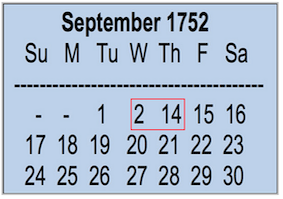15 Most Amazing Predictions for Kali Yuga from the Bhagavata Purana
15 Most Amazing Predictions for Kali Yuga from the Bhagavata Purana
In the last canto of the Bhagavata Purana there is a list of predictions and prophecies about the dark times for the present age of Kali Yuga. The following 15 predictions, written 5,000 years ago by sage Vedavyasa, are amazing because they appear so accurate. Despite the negative tone of these prophecies, there is still one bright spot for all of us, which is mentioned at the end.
Prediction 1:
Religion, truthfulness, cleanliness, tolerance, mercy, duration of life, physical strength and memory will all diminish day by day because of the powerful influence of the age of Kali.
Source: Srimad Bhagavatam 12.2.1
sri-suka uvaca
tatas canu-dinam dharmah
satyam saucam ksama daya
kalena balina rajan
nanksyaty ayur balam smrtih
Prediction 2:
In Kali Yuga, wealth alone will be considered the sign of a man's good birth, proper behaviour and fine qualities. And law and justice will be applied only on the basis of one's power.
Source: Srimad Bhagavatam 12.2.2
vittam eva kalau nṝṇāḿ
janmācāra-guṇodayaḥ
dharma-nyāya-vyavasthāyāḿ
kāraṇaḿ balam eva hi
Prediction 3:
Men and women will live together merely because of superficial attraction, and success in business will depend on deceit. Womanliness and manliness will be judged according to one's expertise in sex, and a man will be known as a brahmana just by his wearing a thread.
Source: Srimad Bhagavatam 12.2.3
dāmpatye 'bhirucir hetur
māyaiva vyāvahārike
strītve puḿstve ca hi ratir
vipratve sūtram eva hi
Prediction 4:
A person's spiritual position will be ascertained merely according to external symbols, and on that same basis people will change from one spiritual order to the next. A person's propriety will be seriously questioned if he dos not earn a good living. And one who is very clever at juggling words will be considered a learned scholar.
Source: Srimad Bhagavatam 12.2.4
lińgaḿ evāśrama-khyātāv
anyonyāpatti-kāraṇam
avṛttyā nyāya-daurbalyaḿ
pāṇḍitye cāpalaḿ vacaḥ
Prediction 5:
A person will be judged unholy if he does not have money, and hypocrisy will be accepted as virtue. Marriage will be arranged simply by verbal agreement, and a person will think he is fit to appear in public if he has merely taken a bath.
Source: Srimad Bhagavatam 12.2.5
anāḍhyataivāsādhutve
sādhutve dambha eva tu
svīkāra eva codvāhe
snānam eva prasādhanam
Prediction 6:
A sacred place will be taken to consist of no more than a reservoir of water located at a distance, and beauty will be thought to depend on one's hairstyle. Filling the belly will become the goal of life, and one who is audacious will be accepted as truthful. He who can maintain a family will be regarded as an expert man, and the principles of religion will be observed only for the sake of reputation.
Source: Srimad Bhagavatam 12.2.6
dūre vāry-ayanaḿ tīrthaḿ
lāvaṇyaḿ keśa-dhāraṇam
udaraḿ-bharatā svārthaḥ
satyatve dhārṣṭyam eva hi
dākṣyaḿ kuṭumba-bharaṇaḿ
yaśo 'rthe dharma-sevanam
Prediction 7:
As the earth thus becomes crowded with a corrupt population, whoever among any of ther social classes shows himself to be the strongest will gain political power.
Source: Srimad Bhagavatam 12.2.7
evaḿ prajābhir duṣṭābhir
ākīrṇe kṣiti-maṇḍale
brahma-viṭ-kṣatra-śūdrāṇāḿ
yo balī bhavitā nṛpaḥ
Prediction 8:
Harassed by famine and excessive taxes, people will resort to eating leaves, roots, flesh, wild honey, fruits, flowers and seeds. Struck by drought, they will become completely ruined.
Source: Srimad Bhagavatam 12.2.9
śāka-mūlāmiṣa-kṣaudra-
phala-puṣpāṣṭi-bhojanāḥ
anāvṛṣṭyā vinańkṣyanti
durbhikṣa-kara-pīḍitāḥ
Prediction 9:
The citizens will suffer greatly from cold, wind, heat, rain and snow. They will be further tormented by quarrels, hunger, thirst, disease and severe anxiety.
Source: Srimad Bhagavatam 12.2.10
śīta-vātātapa-prāvṛḍ-
himair anyonyataḥ prajāḥ
kṣut-tṛḍbhyāḿ vyādhibhiś caiva
santapsyante ca cintayā
Prediction 10:
The maximum duration of life for human beings in Kali Yuga will become 50 years.
Source: Srimad Bhagavatam 12.2.11
triḿśad viḿśati varṣāṇi
paramāyuḥ kalau nṛṇām
Prediction 11:
Men will no longer protect their elderly parents.
Source: Srimad Bhagavatam 12.3.42
na rakshishyanti manujah
sthavirau pitarav api
Prediction 12:
In Kali-yuga men will develop hatred for each other even over a few coins. Giving up all friendly relations, they will be ready to lose their own lives and kill even their own relatives.
Source: Srimad Bhagavatam 12.3.41
kalau kakinike 'py arthe
vigrihya tyakta-sauhridah
tyakshyanti ca priyan pranan
hanishyanti svakan api
Prediction 13:
Uncultured men will accept charity on behalf of the Lord and will earn their livelihood by making a show of austerity and wearing a mendicant's dress. Those who know nothing about religion will mount a high seat and presume to speak on religious principles.
Source: Srimad Bhagavatam 12.3.38
sudrah pratigrahishyanti
tapo-veshopajivinah
dharmam vakshyanty adharma-jna
adhiruhyottamasanam
Prediction 14:
Servants will abandon a master who has lost his wealth, even if that master is a saintly person of exemplary character. Masters will abandon an incapacitated servant, even if that servant has been in the family for generations. Cows will be abandoned or killed when they stop giving milk.
Source: Srimad Bhagavatam 12.3.36
patim tyakshyanti nirdravyam
bhritya apy akhilottamam
bhrityam vipannam patayah
kaulam gas capayasvinih
Prediction 15:
Cities will be dominated by thieves, the Vedas will be contaminated by speculative interpretations of atheists, political leaders will virtually consume the citizens, and the so-called priests and intellectuals will be devotees of their bellies and genitals.
Source: Srimad Bhagavatam 12.3.32
dasyutkrishta janapada
vedah pashanda-dushitah
rajanas ca praja-bhakshah
sisnodara-para dvijah
Despite all of these dark prophecies, there is one good quality in this age of Kali yuga:
kaler dosha-nidhe rajann
asti hy eko maha gunah
kirtanad eva krishnasya
mukta-sangah param vrajet
"Although Kali-yuga is an ocean of faults, there is still one good quality about this age: simply by chanting the names of Krishna, one can become free from material bondage and be promoted to the transcendental kingdom."
(Source: Srimad Bhagavatam 12.3.51)
So let us take advantage of this special spiritual gift given during the dark times of Kali yuga to quickly raise ourselves spiritually through chanting of God's holy names.

Source: Kumar Ramanathan
FB








